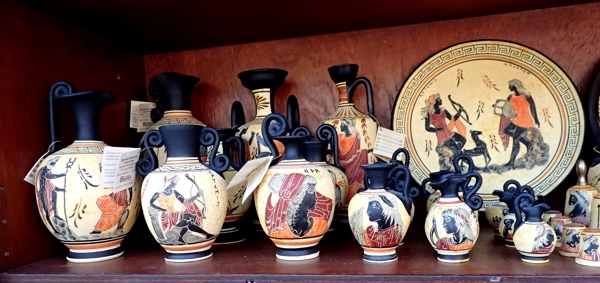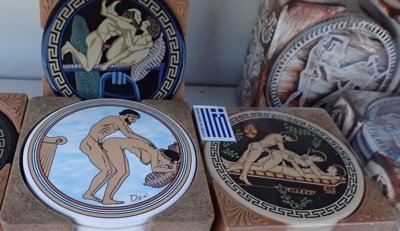Greece!
Today, our ship berthed in Crete around 9am. Nice to have a sleep in and not to have to rush off the ship with that feeling of ‘must see all the things’. We were in Heraklion, a city so named after Hercules, of Greek mythology fame. Crete is a historically unique place, being widely considered to be one of the world’s oldest civilisations. It has been part of countless empires – the Minoan, Phoenician, Greek, Roman, Byzantine, Venetian even, and Ottoman empires. It is a beautiful island home to about 625,000 Cretans (not to be confused with cretins) and tends now to be a playground for tourists and a home away from home, for the rich and famous.
Crete has a thriving agricultural industry, unlike many of the small Greek Islands, and is known for it’s high quality olive/olive oil products, oranges and seafoods. From what we understand though, many prefer to ‘farm the tourists these days, as it is much more lucrative’. Our first stop was to a town called Agios Nikolaos which has a gorgeous coast line and lots of quaint shopping along a nearby interior salt lake. There are loads of small fishing boats that go out to catch fresh seafood for all the restaurants that dot along the coastline, and loads of boutique jewellery and clothing store. So much of the offerings here are seriously familiar.
The jewellery stores are all fantastic though – the designs you see in the jewellery stores here are so completely different to the stuff you see in stores back home. The jewellery has a strong design focus with items that are influenced by ancient Greek, Roman, Egyptian, Byzantine, and Minoan design. Half of it looks like replicas from the V&A or the MET or something. If you’ve ever looked at collections of jewellery from antiquity, you can see strong influences are still evident in the pieces being made by local jewellers today (have a look at my Pinterest board of Jewellery – Ancient if you want to know what I mean). If I was feeling wealthy, I would be in a lot of trouble, I found so many lovely pieces. One serious oddity in the shopping – for an island that is stinking hot most of the year – there is a LOT of fur stores here selling expensive (seriously expensive) fur coats and other fur products. No idea why?!
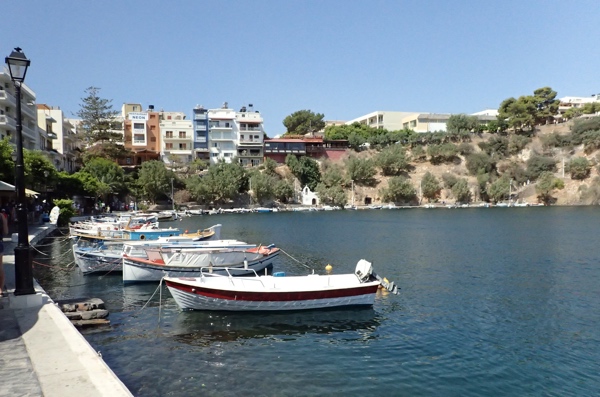
“Want to see my scoot?” 😉
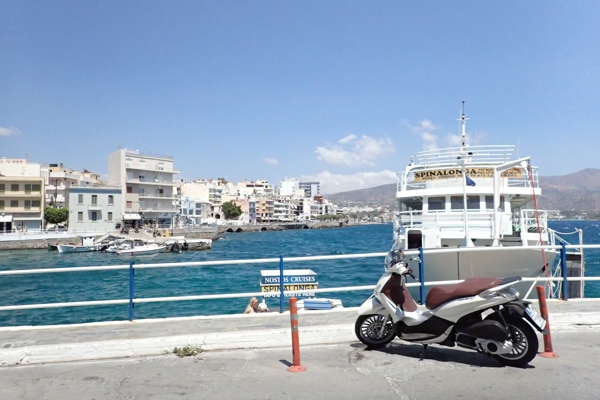 After Aghios Nikloaos we drove around Mirrabella Bay to head over to Elounda to a lovely seaside restaurant for a fantastic spread of Greek delicacies – salad, dolmades, dips, feta, local sausages, chicken, pita, tatziki and all good things. The restaurant had no railings, so quite literally, one foot to the left of my seat was the bay, and I was happily feeding them left over bread and watching them squabble over crumbs… way better than feeding pigeons, and in such a gorgeous spot. After lunch we walked around Elounda, waved ‘hi’ to what we were told was Mick Jagger’s yacht and then head to the cultural highlight part of the day.
After Aghios Nikloaos we drove around Mirrabella Bay to head over to Elounda to a lovely seaside restaurant for a fantastic spread of Greek delicacies – salad, dolmades, dips, feta, local sausages, chicken, pita, tatziki and all good things. The restaurant had no railings, so quite literally, one foot to the left of my seat was the bay, and I was happily feeding them left over bread and watching them squabble over crumbs… way better than feeding pigeons, and in such a gorgeous spot. After lunch we walked around Elounda, waved ‘hi’ to what we were told was Mick Jagger’s yacht and then head to the cultural highlight part of the day.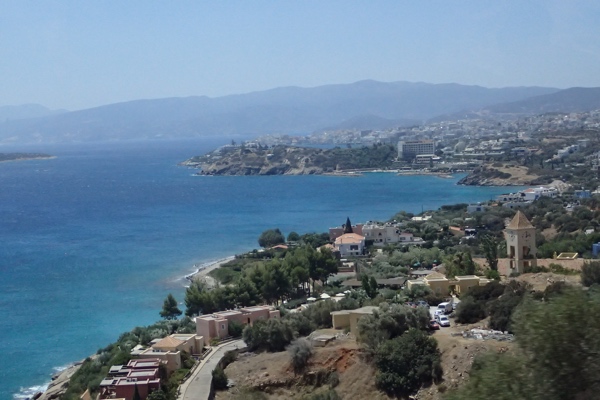
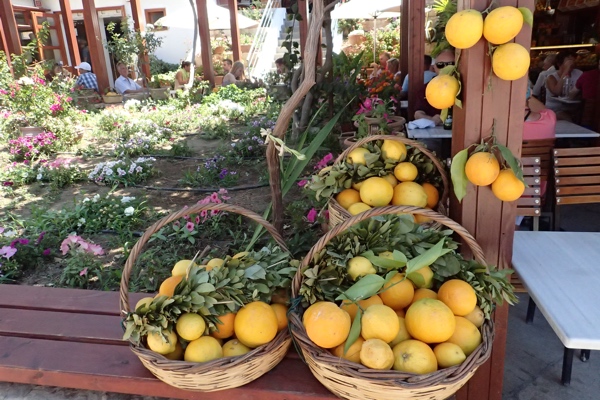
Small fishing boats go out every night and fish when the fish can’t see them.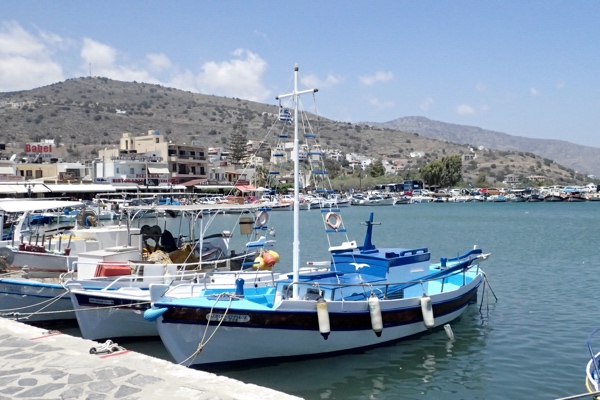
Our last stop in Heraklion was the famous 1300 room, Knossos Palace or Palace of Minos. The Palace is one of the world’s oldest and most significant archeological sites – but, you know, I went to Jarlshof last year and they said the same thing about that place too! These archeologist like to talk up their discoveries I think. 😉 Anyway it is the oldest palace in Europe, where the legendary Minotaur with his bull’s head, human body, and his penchant for cannibalism was hidden away from the world in an ancient Labyrinth. Construction on this site dates back to nearly 10,000 years ago and contains some ancient murals and frescos which are really quite stunning… two dimensional and depicting ancient Minoan festivals and sporting events, they are truly unique.
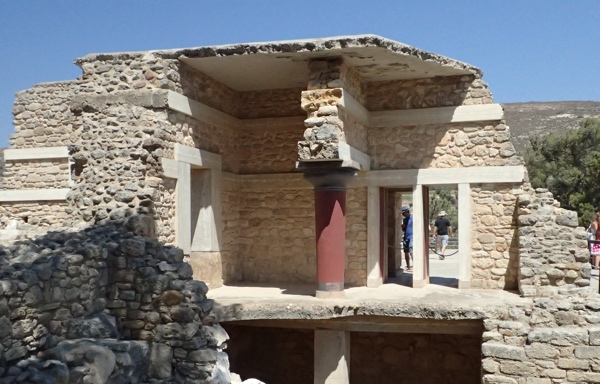
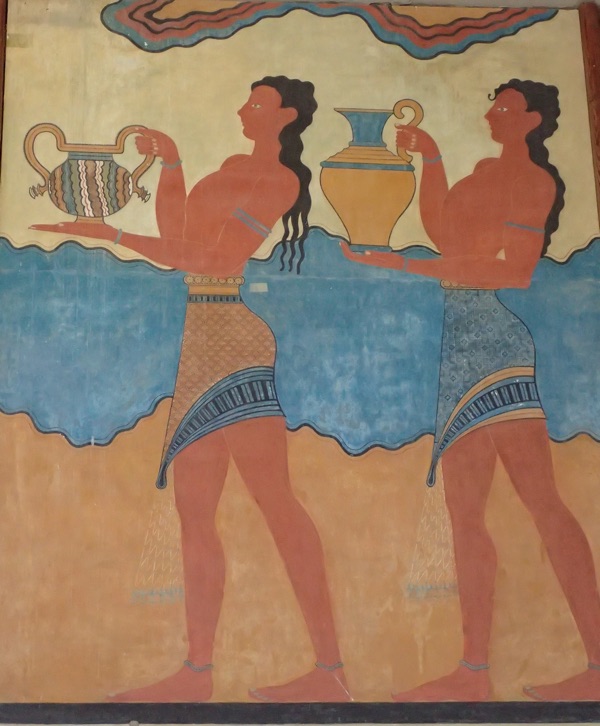
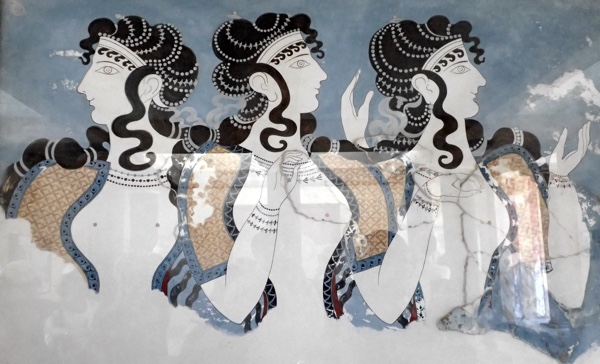 The local guide would have us believe these frescoes are representative of what life was like in ancient Minoan times – women were depicted as white and men as brown/red. They wore unisex small pants and shoe only and participated in a ritualistic rites of passage which involved leaping over charging bulls during the festival where 7 boy and 7 girl strangers would be bought from Athens and fed to the Minotaur. I’m thinking there’s probably considerable artistic license here somewhere. Maybe, just a little.
The local guide would have us believe these frescoes are representative of what life was like in ancient Minoan times – women were depicted as white and men as brown/red. They wore unisex small pants and shoe only and participated in a ritualistic rites of passage which involved leaping over charging bulls during the festival where 7 boy and 7 girl strangers would be bought from Athens and fed to the Minotaur. I’m thinking there’s probably considerable artistic license here somewhere. Maybe, just a little.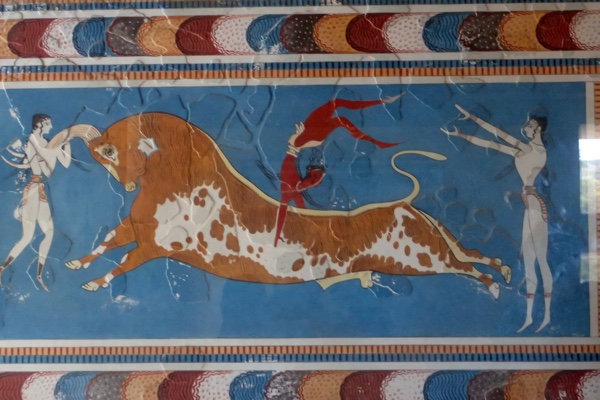
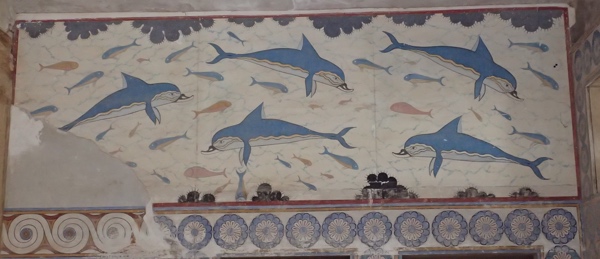 Dolphin fresco in the Queen’s rooms.
Dolphin fresco in the Queen’s rooms.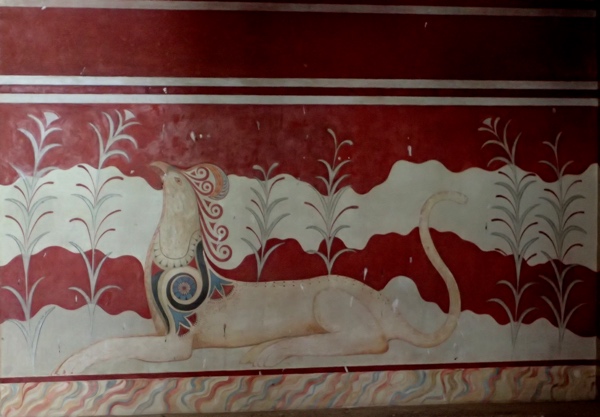 King’s Throne room with alabaster throne.
King’s Throne room with alabaster throne. 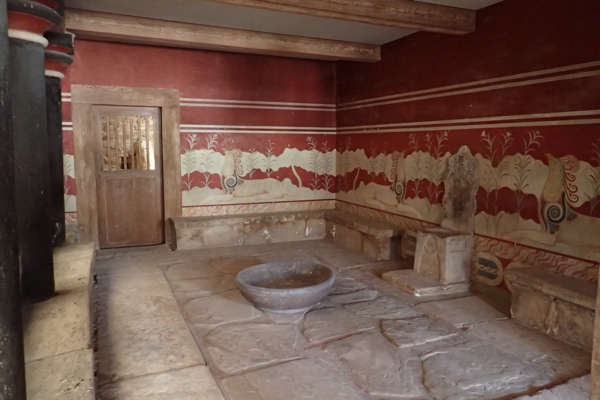
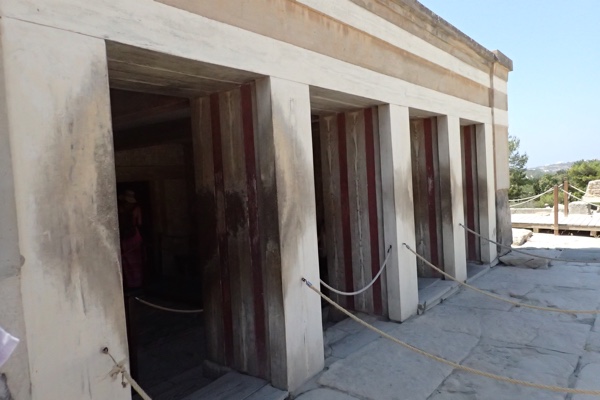
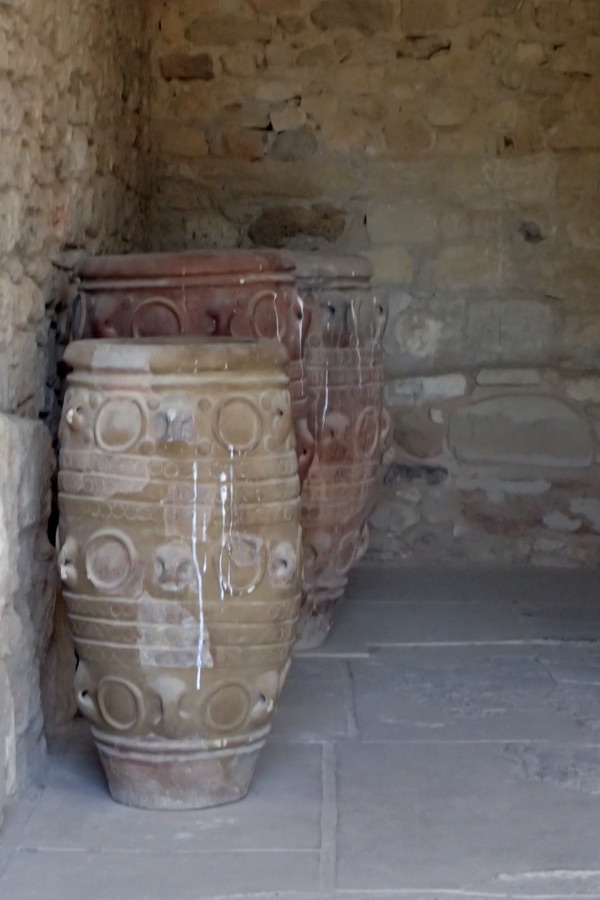
Massive amphorae were used to store olive oil. Large underground holding rooms were used which was for the stable temperature achievable underground – however, there is evidence that a large fire broke out in the Palace at some point (charred alabaster) and an estimated 80,000L of olive oil burned down most of the palace.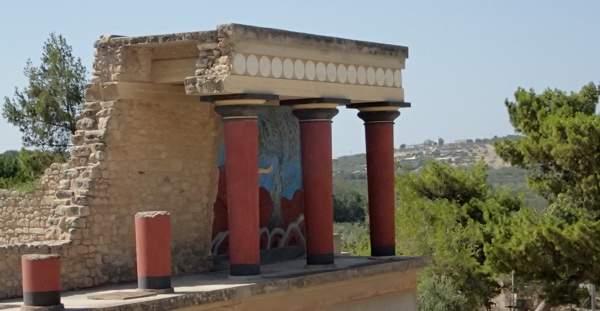
The complex is enormous with twists and turns, and multiple levels all built into the side of the mountain. The complex has been built largely with stone but also has huge beams and pillars of timber that add flexibility and create an effective an anti-seismic measure. it has a 4000 year old water system that brought fresh spring water to the palace from a reservoir at a greater height, as well as the earliest known sewerage system anywhere in the world. It is also located to maximise the northerly breezes that blow off the bay straight down the valley, such that even standing in full sun at 37C today, the strong breezes kept us relatively cool.
Souvenirs – some classy, some not so much…